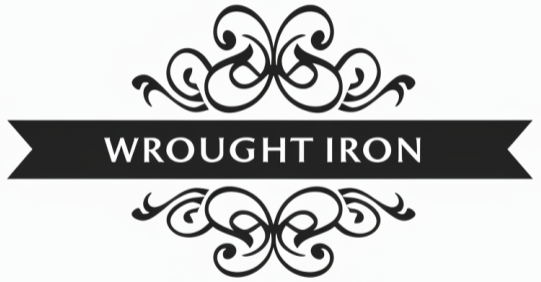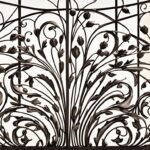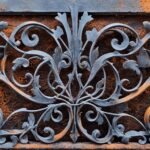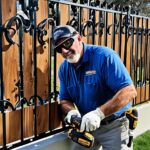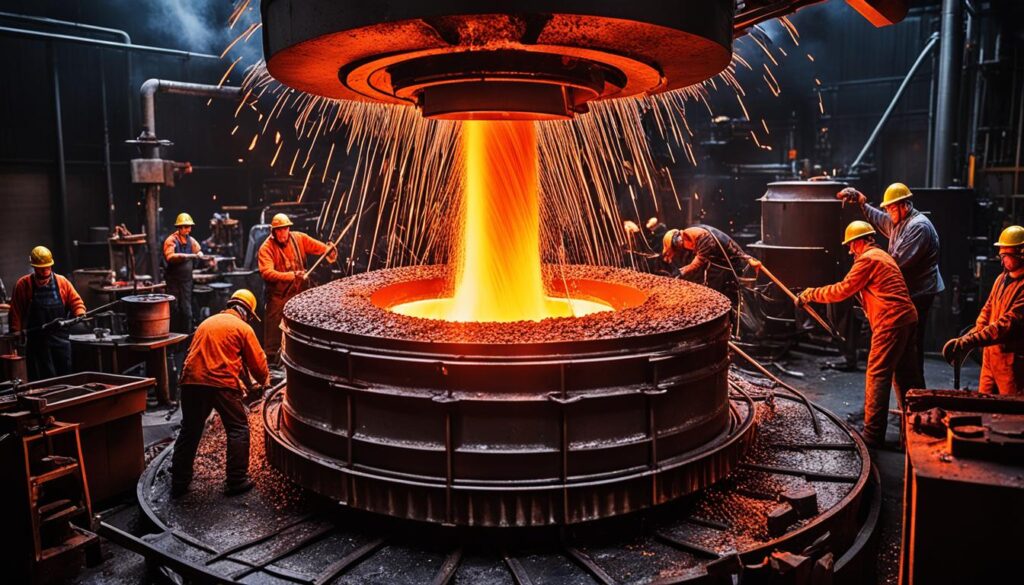
Have you ever wondered why we still love wrought iron? Despite advances in technology, it keeps us intrigued. This material has been cherished for centuries for its unique beauty and strength1. Let’s dive into how this ancient metal is crafted. Then, we’ll understand what sets it apart from other iron and steel types.
Wrought iron making is a complex process. It starts from iron ore and leads to pure iron with very little carbon (less than 0.1%)2. In the past, craftsmen used to heat, hammer, cool, and reheat the iron. But over time, new methods were developed. These changes have kept wrought iron a top choice in the metal industry. They also play a big role in the rich history of this craft.
We will look at how wrought iron has been made over the years. From old methods using bloomery furnaces to the more recent “puddling” breakthrough in the 18th century12. We will also cover today’s challenges and applications for wrought iron. So, whether you love tinkering with metals or just want to learn, this article will inform you. It shines a light on why wrought iron is still interesting in our time.
Key Takeaways
- Wrought iron has been used since the Han Dynasty in China and continues to be celebrated for its unique properties1.
- The material is nearly pure iron, with minimal carbon content (less than 0.1%)2.
- Historical methods involved heating and forging processes, while modern methods evolved through innovations like the puddling process12.
- Wrought iron production decreased in the early 20th century as steel gained popularity, leading to a niche market for specialized applications1.
- Modern-day wrought iron is predominantly made from recycled material, with only one producer left in the UK2.
- Unique handcrafted wrought iron products are best for aesthetic applications requiring both beauty and durability1.
Introduction to Wrought Iron
Wrought iron is known for its unique look, similar to wood, and special properties. It has been key in iron history and in creating items through smithing. It has very little carbon, less than 0.05%, with most of its makeup being iron, around 99.4% by weight3.
What is Wrought Iron?
It’s a type of iron mix with low carbon, typically under 1%. It has about 0.02-0.03% carbon content4. This mix also has ferrite and slag, making it lighter, about 7.74 g m−2 because of the slag4.
The making process of wrought iron makes it flexible, strong, and able to resist rust. It’s great for shaping with a yield strength of 220 N/mm2. This makes it a bit weaker than mild steel but better against wear4.
To make wrought iron, it goes through piling, heating, hammering, and rolling many times. This makes it better and more even4.
Historical Significance
Wrought iron was very important in iron-making in the past, reaching high demand in the 1860s. It was used in strong warships and building railways3. Though not made on a big scale now, we find items like guard rails and garden furniture are made with other metals that look similar3. This shows how smithing has changed over time.
The ways they made wrought iron were essential for making various tools and objects, like swords and chisels. The special quality of wrought iron suited it for tough and flexible tasks, like in rail systems. Its special slag, which can be 1-4%, gives it a unique fiber look, making it easier to work with4.
So, wrought iron has been really important in the progress of iron making and smithing for many years.
The Basics of Iron Smelting
Iron smelting is a cool process. It changes iron ore into a stuff we can use. This makes way for different kinds of iron like pig iron and cast iron.
The Role of Pig Iron and Cast Iron
Pig iron is made first when we smelt iron ore in a big furnace. It’s then processed more to make things like cast iron and later wrought iron. Back in the 18th century, blast furnaces using coke could make 5 to 10 tons of pig iron every week5. Pig iron is very hard and fragile because it has lots of carbon. Mixing the iron ore with charcoal before smelting caused this6. Cast iron is also high in carbon, but it’s made to be more even for pouring into molds5.

Differences Between Cast Iron and Wrought Iron
It’s important to know how cast iron and wrought iron are different for those working with iron. These metals are made through smelting, but they’re used differently. Cast iron has 2% to 4% carbon, which makes it break easily and not very flexible5. On the other hand, wrought iron is made to be strong and flexible by removing most of the carbon. Due to this process, it’s better for things like gates and railings that need to move but also be tough.
People started making things with iron around 2000 BC. Blast furnaces in Europe from the 15th century started the large-scale cast iron production5. The difference in carbon content and how they melt affects what cast iron and wrought iron are best for.
The Bloomery Process
The bloomery process is a key part of our ancient past. It’s vital for the creation of old-style ironwork. We’ll explore where it started and how a bloomery furnace works, revealing the magic of this ancient method.
Origins of the Bloomery
The story goes back to at least 1200 BC, kicking off the Iron Age. Early bloomeries were first found in East Africa, around the 6th century BC, and Nigeria by 750 BC7. Over time, improvements were made. In China, for example, they switched to blast furnaces, which were better at making wrought iron7.
In Europe, the first bloomeries were pretty small. But they got bigger with the help of waterwheels and larger bellows7. These changes made it possible to create huge iron structures, like the iron pillar in Delhi, around the 3rd century AD7.
Operation of a Bloomery Furnace
Running a bloomery furnace is quite interesting. You put about 30 kg of ore on top and add the same amount of charcoal8. This mix allows the furnace to work, letting in air through tuyeres. This is how the ore turns into iron in a process that takes four hours78.
A byproduct of this process is slag. It’s a mix of silicates, iron, and other stuff8. The final product is called a bloom. It’s then beaten under a power hammer. This makes the iron tough but workable, ready for shaping into things like tools. This iron, called wrought iron, has less carbon than cast iron, only 2% to 4%7.
To wrap it up, the bloomery process isn’t just about the past. It shows how creative people were in making strong, usable iron. The use of charcoal iron in old ironworks helped change society. Plus, it still influences how we make metals today.
The Puddling Process
The puddling process changed how wrought iron was made in a big way. It boosted efficiency and improved the final product. Let’s explore what puddling is, its key steps, and its impact on wrought iron making.
What is Puddling?
Puddling was first done in 1784 by Henry Cort. It was a new way to make iron flexible from hard pig iron without using charcoal9. This innovation made a big difference in the iron industry. It turned pig iron into bar iron in a furnace heated by coal10. But before using the furnace, it was covered with iron oxides, which is called ‘fettling’9.
Steps Involved in Puddling
The puddling process has a number of important steps:
- Pig iron is melted in a coal-fired reverberatory furnace.
- It is stirred by hand, leading to decarburization during the ‘boil’ phase11.
- The carbon in the iron turns to gas, separating the pasty iron from the slag11.
- The iron is shaped into balls and taken out of the furnace; each ball weighs around 250 kg (5 cwt)9.
- The end product is malleable wrought iron, ready for more work.
Impact of the Puddling Process on Wrought Iron Production
The impact of puddling was huge. In the early 1830s, Joseph Hall developed wet puddling, which was much more efficient. It could use nearly all its materials, unlike dry puddling that lost up to 23%10. By the mid-1790s, Britain was producing 150,000 tons of wrought iron each year. This was almost five times more than in 178811. Puddled iron was used in famous structures like the Eiffel Tower and the first Statue of Liberty frame10.
“Only in 1885 did steel output exceed that of wrought iron in Great Britain.”11
Puddlers often had to stop working early in life because of the heat damaging their health9. But, puddling was still a key way to make iron for many years. It changed how blacksmiths worked in the 19th and 20th centuries, improving the quality of iron used around the world.
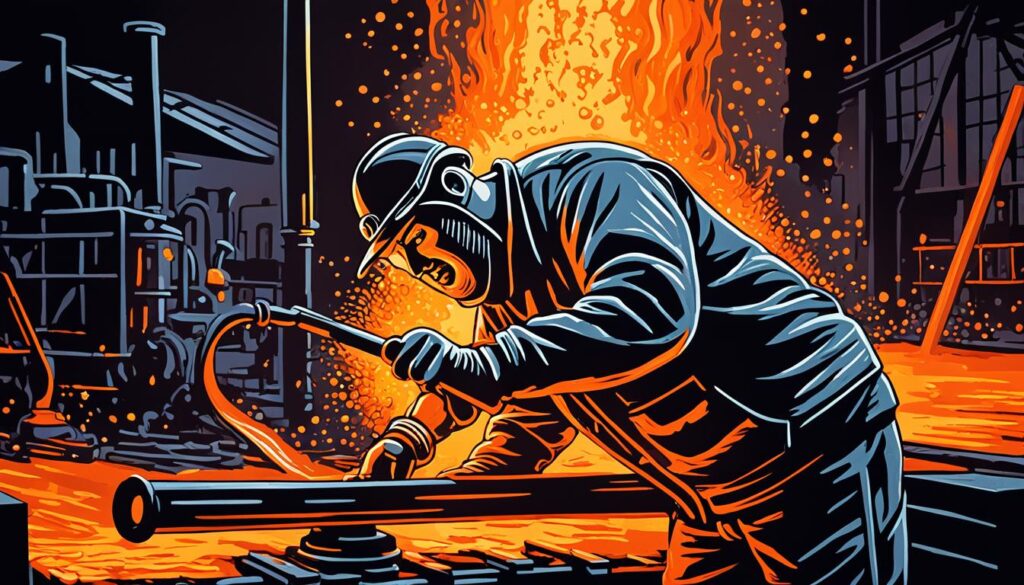
The puddling process was crucial in advancing wrought iron making. It showed the value of smart blacksmithing techniques.
Working with Wrought Iron in the Forge
Working with wrought iron in the forge is both an art and a science. It takes skill and strength. We’ll explore how to make wrought iron more malleable. This involves the finery hearth and the helve-hammer.
Fining and Hammering Techniques
The first step is to make cast iron more workable. This is done through fining and hammering. Workers heat cast iron to reduce its carbon. Then they hammer it with large sledge hammers. This shapes and further refines the iron.
The Role of the Finery Hearth
The finery hearth is key to this process. It slowly melts down cast iron. This reduces its carbon content in a controlled way12. What’s left is a form of iron that can be worked into shapes. This method dates back to the Han Dynasty. It shows the hearth’s importance through history.
Using the Helve-Hammer
After the first hammering, blacksmiths use the helve-hammer for stronger blows. This 500-pound tool applies a lot of force. It welds and stretches iron crystals. This process pushes impurities to the ends. The result is purer wrought iron12. The helve-hammer is vital for the final piece to have the right strength and form13.
- Fining and hammering convert cast iron into malleable wrought iron12.
- The finery hearth reduces carbon content1.
- The helve-hammer welds and elongates the iron, ensuring purity and strength1213.
The Iron Smelting Process Explained
To understand how we make wrought iron, we must know about the iron smelting process. It goes through important steps like reducing carbon content and producing slag. We also look into the final transformations iron goes through. These are key in turning raw iron into a usable form.
Decreasing Carbon Content
In smelting iron, the first big step is to lower the carbon content. Raw iron, or pig iron, is very brittle because of its high carbon content. We need to reduce this carbon to make wrought iron, which is strong and flexible. By 2nd millennium BC, iron was being made from ores in places like Greece and India14. The reduction process involves heating the iron and using a reactant to remove carbon. This method, used for over 95% of iron, is great for its efficiency. There’s also another way to make iron, called direct reduction. This is used in special cases where natural gas is very cheap15.
Producing Slag in the Forge
Slag making is key in iron smelting. When we smelt iron ore, we get molten iron and slag. Slag is important since it helps remove impurities from the iron. It consists mostly of silica and other minerals15. Slag floats on top of the molten iron, making impurities removal easier. The gas produced in this stage has CO and CO2, which affect the process energy-wise15.
Final Stages in Iron Smelting
After reducing carbon and producing slag, iron enters final stages to make it workable. First, the iron turns into a spongy mass known as a bloom, a method started around 2500 B.C. in the Middle East16. The bloom is then heated and hammered several times. This incorporates silicates, turning it into wrought iron16. The process has evolved, leading to new technologies like taller furnaces and manual bellows by the 1300s in Europe16.
Forging and Shaping Wrought Iron
Forging is key to shaping wrought iron. It uses techniques like drawing down and punching. These methods are vital for getting the iron strong and flexible17.
Heating the iron to about 2500° Fahrenheit is the first step. Once hot, blacksmiths shape the iron into detailed designs using techniques like drawing and upsetting17. Craftsmanship in this stage requires precision to meet both look and use needs.
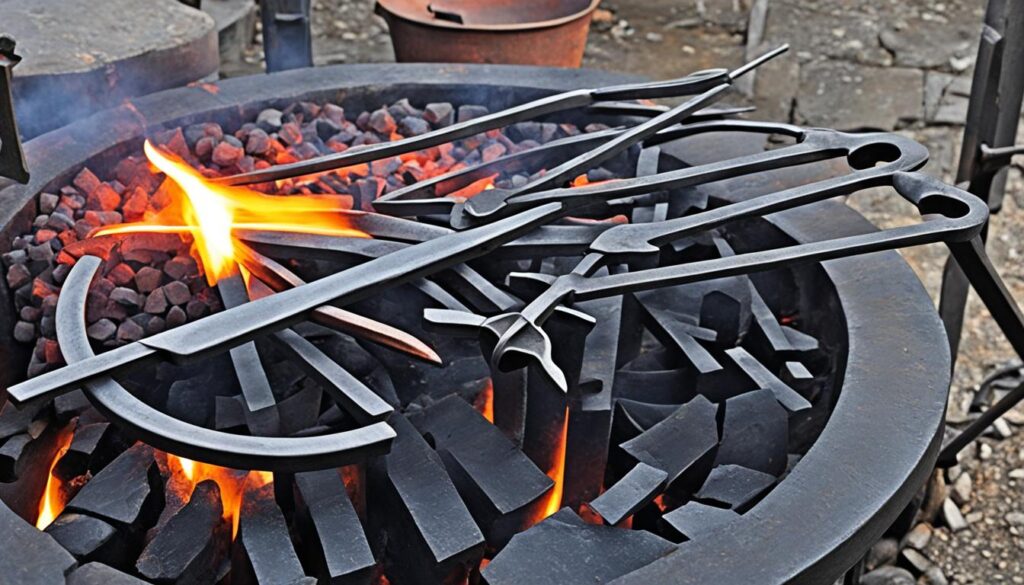
At this stage, the iron is red-hot and cleaned of cinder by hammering lightly. This keeps the iron pure and structurally sound. To make large curved shapes, the iron is placed on supports and hit in the middle18.
Welding joins pieces of wrought iron. Once they’re hot enough to glow yellow or white, these pieces are fused together13. This process showcases high-level blacksmithing skills in making custom items.
The last step is finishing the forged item. Blacksmiths smooth surfaces, harden the metal, or add finishes like paint. They also polish the iron with fine powders and soft materials moistened with oil to improve its look1318.
Key Characteristics of Wrought Iron
Wrought iron stands out for its unique features, including low carbon content and fibrous slag inclusions. This makes it resistant to corrosion. It has about 0.1% carbon, along with 0.25% impurities and 2% slag. These factors make wrought iron different from both cast iron and steel19.
Unique Properties
One special thing about wrought iron is its fibrous look. This comes from the slag inclusions that shape its surface like wood. Though it looks interesting, this also makes it long-lasting and easy to shape3. What’s more, it stands strong at about 300MPa. This makes wrought iron a good choice for both decorative and strong building work19.
Plus, it’s really good against rust. This saves money on upkeep, making it a great choice for things like gates and railings193.
Comparisons with Other Iron-Based Materials
The discussion between wrought iron and cast iron has been going on for a while. Wrought iron has very little carbon, less than 0.035%. That’s much less than cast iron’s 2%-4% carbon. This difference gives wrought iron its flexible and strong qualities while cast iron is more likely to break easily203. Also, wrought iron is better at fighting off rust compared to cast iron.
When we look at wrought iron versus steel, things change. Steel, with its 0.06% to 2% carbon, is naturally tougher and can be shaped in many ways. But, it doesn’t have the special look or ability to resist weather that wrought iron does203. By the late 1800s, steel was more often used because it was cheaper to make and worked better for building things203.
| Material | Carbon Content | Unique Characteristics | Common Uses |
|---|---|---|---|
| Wrought Iron | Less than 0.035% | Fibrous structure, high corrosion resistance | Furniture, gates, railings, balconies |
| Cast Iron | 2%-4% | High hardness, vibration damping | Valve bodies, engine blocks, cookware |
| Steel | 0.06%-2% | High strength, versatility | Construction, machinery, automotive parts |
Common Uses of Wrought Iron
Wrought iron has been a key material throughout history. It is still used widely today. It started as a decorative material and then grew into a strong choice for buildings and more.
Historical Applications
People began using wrought iron a lot in the seventeenth and eighteenth centuries. Mostly for making things pretty. They decorated gates and buildings with it20. Later on, in the nineteenth century, they saw how strong it was. They started using it in nails, tie rods, and I-beams. This change showed how durable and long-lasting wrought iron could be20.
Iron became really popular in the 1860s because of ironclad warships and new railroads3. It was being made in larger amounts than ever in the UK by 18763. But today, it’s not made in big amounts like before.
Modern-Day Uses
Nowadays, wrought iron is mostly for decoration. You’ll find it in gates, garden furniture, and railings. Even though it’s not as common, it’s still known for being tough and resisting rust3. Mild steel is often used now instead. This keeps the strong and elegant traits of wrought iron alive.

The traditional uses of wrought iron are still a big inspiration for designers today. They blend old ideas with new needs. Wrought iron is valued for both its strength and its beauty. It remains important in the things we build.
How is Wrought Iron Made: A Step-by-Step Guide
Starting the step-by-step wrought iron making journey involves choosing the right iron ore. It’s best if the ore has at least 60% iron for top quality21. Iron is very common in the earth’s crust, so it’s easy to find21.
Miners dig deep, sometimes over half a mile down, to get to the iron ore21. They then remove impurities by heating and hammering the ore. Ancient Chinese people, during the Han Dynasty, were experts at this process1.
During the Iron Age, people used the bloomery process. They would heat the iron ore in furnaces and later shape it through hammering1. Henry Cort’s puddling process in 1784 is also important. It involves blowing hot air over molten iron to remove impurities. Then, the iron is stirred and shaped into puddle bars1.
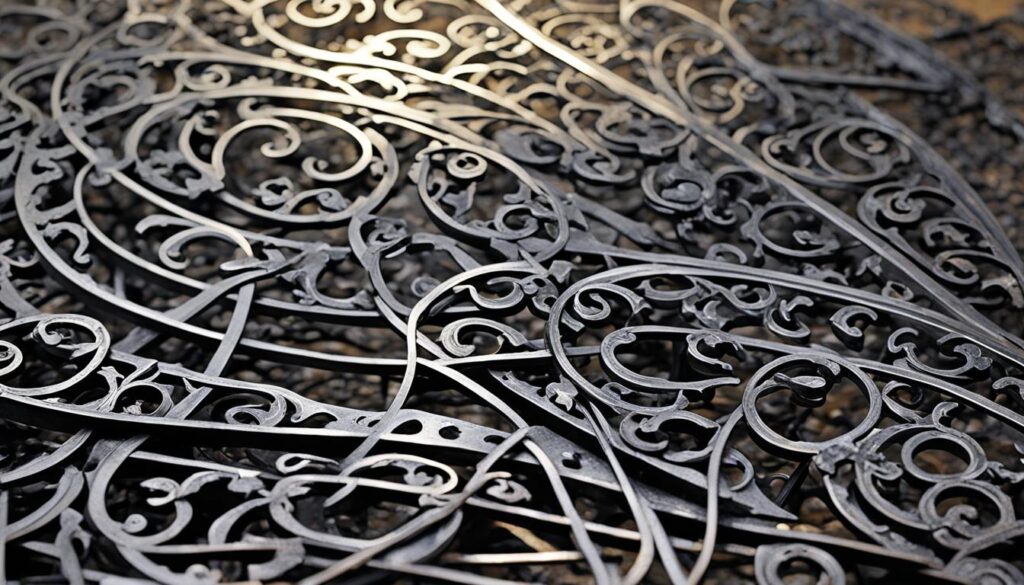
In the late 18th century, rolling mills were introduced. They allowed for making higher quality wrought iron by rolling the puddle bars. This improved wrought iron could be reshaped by reheating and rolling whenever needed1. Blacksmiths used these techniques to make beautiful and strong wrought iron products1.
Today’s blacksmithing techniques are much more precise with hammering and rolling. The iron is shaped through careful forging and hammering for specific designs. Universal Iron Doors is famous for their wrought iron works1.
The final steps in making wrought iron include putting it up and looking after it well. These items need regular cleaning to avoid rust. They also must be painted with rust-proofing primer and enamel paint for a longer life21. In Vancouver, Riverside Ironworks Canada Inc. has over 70 years of expertise in making and installing beautiful wrought iron fences22.
Wrought iron making is not only a mix of old and new techniques. It’s also about creating items that are both useful and beautiful. This whole process, from mining to hammering and rolling, is full of skill and history.
Challenges in Wrought Iron Production
Making top-notch wrought iron faces big hurdles, thanks to nature and us. It’s key to know these challenges to move the field forward.
Defects and Issues
Problems in making wrought iron include different mistakes like redshort and coldshort iron. Redshort, from too much sulfur, makes iron weak when it’s hot. Coldshort iron, from lots of phosphorus, makes it weak when cold20.
Slag, found from 1% to 4%, gives wrought iron its layered look. This can lead to weak spots23. Iron can also get damaged by chemical rust or pitting, hurting its strength and stay-power20.
Improving Quality
To make better wrought iron, we need clear quality checks and smart ironworking. Henry Cort’s puddling process from 1784 was a big step. It made pig iron have less carbon, dropping the loss amount from 30% to under 15%2324.
This method also cuts out impurities like silicon and phosphorus23. Today, we better protect wrought iron from rust and other damage. This improves how it’s used and how long it lasts20.
New ideas are always popping up to make wrought iron stronger and look better. This ensures it keeps its special role in history and today20.
| Defect Type | Cause | Impact |
|---|---|---|
| Redshort Iron | High sulfur content | Brittleness at high temperatures |
| Coldshort Iron | High phosphorus content | Brittleness at lower temperatures |
| Slag Inclusion | Impurities from production | Laminated structure causing weak spots |
Transition from Wrought Iron to Modern Materials
The move from old wrought iron to new materials changed the metal world. People switched to modern materials like mild steel for better use and longer life. This move brought modern tech and more durable items like mild steel into everyday life.
The Rise of Mild Steel
Mild steel, a newer version of low-carbon steel, took over from wrought iron. It was chosen for being tough, easy to shape, and staying rust-free. Lots of things changed from being made of wrought iron to mild steel, like tools and even knives3.
Impact of the Bessemer Process
The Bessemer process is big in the steel world as it started the move from wrought iron to advanced ways of making steel. Henry Bessemer created this method in 1856. It cleaned up molten pig iron using air, making steel better and quicker to produce3. This method made making mild steel cheaper and less hard, which meant more people could use it.
With the Bessemer process, making steel got easier and less costly. For example, Britain went from producing 1.3 million tons of pig iron in 1840 to 10.4 million tons by 191325. This shows how this method changed the steel world by making it easier to make large amounts of steel at a lower cost.
| Year | Innovation | Impact |
|---|---|---|
| 1828 | Hot blast technology | Reduced fuel consumption by one-third to two-thirds |
| 1784 | Henry Cort’s puddling process | Facilitated structural-grade iron production |
| 1856 | Bessemer process | Revolutionized steel production, reducing costs and increasing efficiency |
In 1875, the UK led in making 47% of the world’s pig iron and almost 40% of its steel, showing its big role in metal-making25. This shows that the Bessemer process made it easier and cheaper to make quality steel. It meant that steel, not wrought iron, would be the top pick for materials.
Conclusion
The story of wrought iron spans from 2000 BCE to today and is truly fascinating26. Back then, this method helped build stunning medieval buildings like castles and cathedrals26. The Industrial Revolution later improved how we make wrought iron, paving the way for more progress26.
Creating wrought iron is a detailed process done through smelting, puddling, and more26. This gives it unique properties like being easily shaped but also strong and resistant to rust26. Its use today, in things like green buildings, shows its lasting nature and adaptability26. Now, with high-tech methods, artists can make new creations while keeping the tradition alive26.
In the 20th century, wrought iron made a big comeback as a decorative material27. Companies like QPSL and stores like The Garden Path focus on unique, hand-made wrought iron products2627. Looking forward, combining old methods with new tech will keep wrought iron important in design and history26. It will stay a key part of our architectural and cultural stories.
FAQ
How is Wrought Iron Made? A Guide to the Process
What is Wrought Iron?
What is the Historical Significance of Wrought Iron?
What is the Role of Pig Iron and Cast Iron in Wrought Iron Production?
How Does Cast Iron Differ from Wrought Iron?
What are the Origins of the Bloomery Process?
How Does a Bloomery Furnace Operate?
What is Puddling in Iron Production?
What are the Steps Involved in Puddling?
How Did the Puddling Process Impact Wrought Iron Production?
What are Fining and Hammering Techniques in Forging Wrought Iron?
What is the Role of the Finery Hearth in Ironworking?
How is the Helve-Hammer Used in Ironworking?
How is Carbon Content Reduced in Iron Smelting?
Why is Slag Production Important in the Smelting Process?
What are the Final Stages in Iron Smelting?
What are the Key Forging and Shaping Techniques for Wrought Iron?
What are the Unique Properties of Wrought Iron?
How Does Wrought Iron Compare to Other Iron-Based Materials?
What were Historical Applications of Wrought Iron?
How is Wrought Iron Used in Modern Days?
What are the Typical Steps in Making Wrought Iron?
What Challenges are Faced in Wrought Iron Production?
How Can Quality be Improved in Wrought Iron Production?
How Did the Transition from Wrought Iron to Modern Materials Occur?
What is the Impact of the Bessemer Process?
Source Links
- https://www.iwantthatdoor.com/how-is-wrought-iron-made/ – How Is Wrought Iron Made? | Universal Iron Doors
- https://www.dorothearestorations.com/consultancy-project-management/architectural-wrought-iron-restoration-conservation-guide/ – Architectural Wrought Ironwork | Restoration and Conservation Guide
- https://en.wikipedia.org/wiki/Wrought_iron – Wrought iron
- https://www.sciencedirect.com/topics/chemistry/wrought-iron – Wrought Iron – an overview
- https://www.britannica.com/technology/iron-processing – Iron processing | Definition, History, Steps, Uses, & Facts
- https://www.thecrucible.org/how-to-smelt-iron/ – Here is How to Smelt Your Own Iron
- https://en.wikipedia.org/wiki/Bloomery – Bloomery
- https://anitachowdry.blog/2014/07/30/the-ancient-art-of-smelting-iron-in-a-bloomery/ – The ancient art of smelting iron
- https://www.culturenlmuseums.co.uk/story/puddlers-shinglers-rollers-the-story-of-malleable-iron/ – Puddlers, Shinglers & Rollers: the Story of Malleable Iron
- https://en.wikipedia.org/wiki/Puddling_(metallurgy) – Puddling (metallurgy)
- https://www.hmsjournal.org/index.php/home/article/download/169/164 – 3 Flemings.indd
- https://www.nps.gov/articles/000/iron-making-refining-into-wrought-iron.htm – Iron Making: Refining into Wrought Iron (U.S. National Park Service)
- https://www.prestigewroughtiron.com.au/blog/how-do-blacksmiths-work-with-wrought-iron/ – How Do Blacksmiths Work With Wrought Iron?
- https://en.wikipedia.org/wiki/Ferrous_metallurgy – Ferrous metallurgy
- https://www.britannica.com/technology/iron-processing/Iron-making – Iron processing – Smelting, Refining, Alloying
- https://science.howstuffworks.com/iron2.htm – How Iron and Steel Work
- https://worldinteriors.com/blogs/before-you-buy-materials-construction-and-build-processes/the-iron-furniture-guide-all-about-iron-furniture – The Iron Furniture Guide: Cast Iron and Forged Iron
- https://wroughtworks.com/wrought-iron-techniques-past-and-present/ – Wrought Iron Techniques | Past and Present
- https://www.metalsupermarkets.com/wrought-vs-cast-iron-what-is-the-difference/ – Wrought vs Cast Iron: What is The Difference? | Metal Supermarkets
- https://www.gsa.gov/real-estate/historic-preservation/historic-preservation-policy-tools/preservation-tools-resources/technical-procedures/wrought-iron-characteristics-uses-and-problems – Wrought Iron: Characteristics, Uses and Problems
- https://www.underwoods-steels.co.uk/how-iron-railings-are-made – How Iron Railings are Made
- https://riversideironworks.ca/wrought-iron-fencing-a-step-by-step-guide-to-how-its-done/ – Wrought Iron Fencing: A Step-By-Step Guide to How It’s Done! – Riverside Ironwork Canada Inc.
- https://www.sciencedirect.com/topics/materials-science/wrought-iron – Wrought Iron – an overview
- https://www.britannica.com/technology/wrought-iron – Wrought iron | Properties, Uses & History
- https://courses.lumenlearning.com/suny-hccc-worldhistory2/chapter/changes-to-iron-production/ – Changes to Iron Production | History of Western Civilization II
- https://qpsl.com/wrought-iron-a-timeless-craft/ – Wrought Iron: A Timeless Craft – QPSL
- https://www.gardenpathpa.com/blogs/articles/what-is-wrought-iron – What is Wrought Iron?
